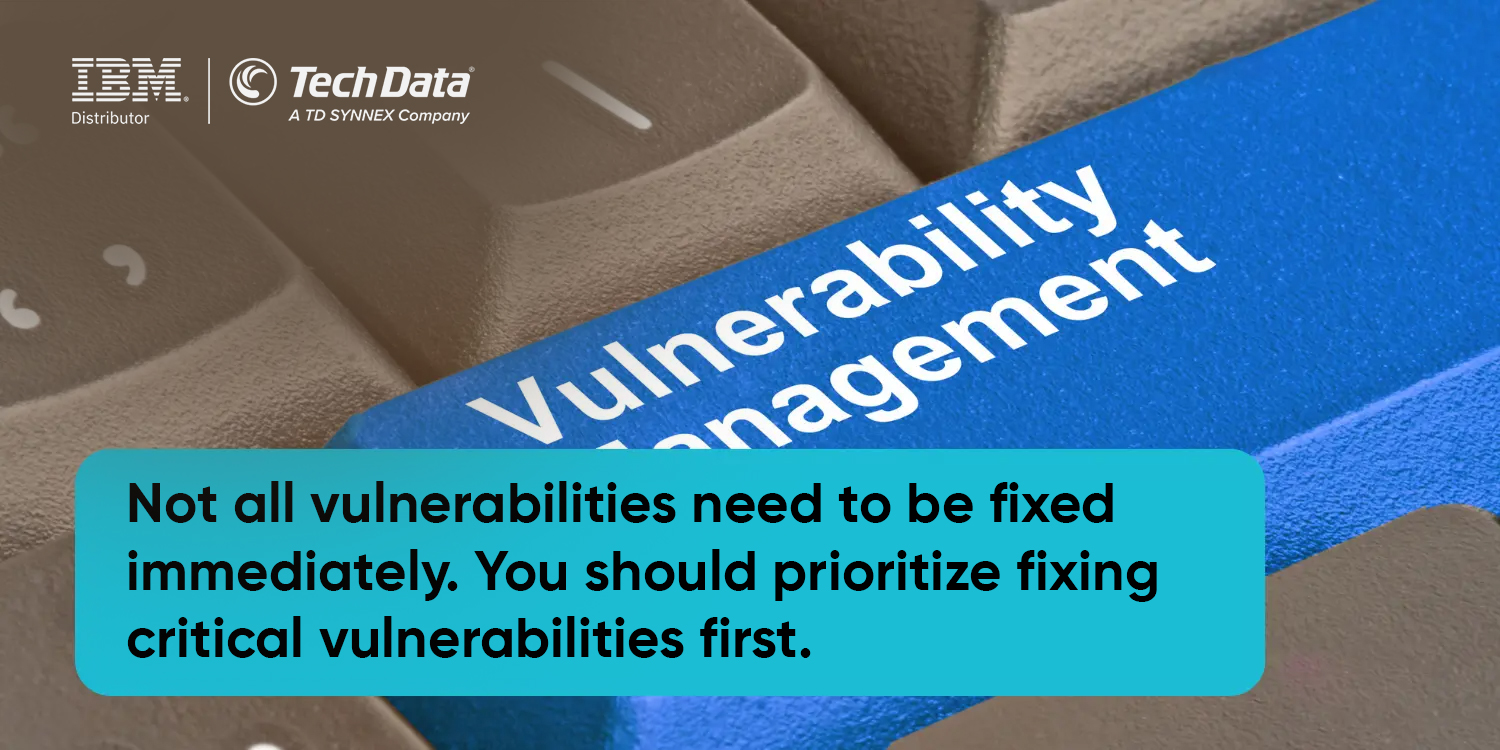In the digital age, when all business, management, and communication activities depend on the network system, information security becomes a vital factor. And “security holes” are the weakest “link”, where attackers can penetrate, steal data, paralyze the system and seriously damage the reputation and finances of the business. This article will provide you with a comprehensive view of security holes, from concepts, classifications, to effective prevention and remediation methods.
What is a security vulnerability?
A vulnerability is a weakness or flaw in the design, implementation, operation, or configuration of a hardware, software, or network system that can be exploited by an attacker to gain unauthorized access, perform malicious actions, or cause unintended consequences. For example:
- A flawed piece of code in customer management software could allow an attacker to access the personal information of thousands of customers.
- A misconfiguration on a web server could allow an attacker to upload malicious files and take control of the server.
- A weak password can be easily cracked, allowing attackers to access user accounts and steal information.
For tailored security solutions to address and prevent vulnerabilities, contact Tech Data India — the official distributor of IBM — for industry-leading cybersecurity tools and support.

Why are security holes dangerous?
Security holes are the “door” for cyber attacks, causing potential consequences such as:
- Data loss: Customer data, financial information, trade secrets can be stolen or deleted.
- Disruption of operations: The system may be paralyzed, affecting production and business activities.
- Financial losses: The costs of troubleshooting, damages, and lost revenue can be huge.
- Loss of reputation: The reputation of the business can be seriously damaged, affecting the trust of customers and partners.
- Violations of the law: Businesses can be fined for violating regulations on personal data protection.
Classification of security vulnerabilities
To effectively prevent and fix security vulnerabilities, you need to understand the different types of vulnerabilities. Here are some common classifications:
Based on location:
- Software Vulnerability: Occurs in the software code, library, or framework.
- Hardware Vulnerability: Occurs in the design or manufacture of the hardware.
- Vulnerability: Occurs in network configuration or protocol.

Based on cause:
- Programming errors: Syntax errors, logic errors, buffer overflows, SQL injection, Cross-Site Scripting (XSS).
- Misconfiguration: Weak passwords, inappropriate access rights, unnecessary services enabled.
- Poor design: No strong authentication mechanism, no data encryption mechanism.
Based on severity
- Critical: Allows an attacker to take control of the system.
- High: Allows attacker to perform significant malicious actions.
- Medium: Allows attackers to collect sensitive information or cause minor disruption.
- Low: Allows attackers to perform minor malicious actions.
Most common types of security vulnerabilities
| Type of hole | Describe | For example |
| SQL Injection | Attackers inject malicious SQL code into SQL queries to access, modify, or delete data in the database. | A website allows users to enter a username and password. An attacker can enter SQL code into the username field to bypass the authentication process. |
| Cross-Site Scripting (XSS) | Attackers inject malicious JavaScript code into websites to steal user information, redirect users to malicious websites, or change the content of the website. | An online forum allows users to post messages. An attacker could insert a piece of JavaScript code into a message to steal other users’ cookies. |
| Cross-Site Request Forgery (CSRF) | Attackers trick users into performing unwanted actions on a website they are logged into. | A user has logged into an online banking account. An attacker could send the user an email containing a link to a malicious website. When the user clicks the link, the attacker could transfer money from the user’s account to his own. |
| Buffer Overflow | An attacker writes data that exceeds the size of a buffer, overwriting other memory areas and causing errors or taking control of the system. | An image processing software can be attacked by sending an image that is too large, causing a buffer overflow and allowing the attacker to execute malicious code. |
| Remote Code Execution Vulnerability | An attacker can execute malicious code on a remote system. | A remote management software can be compromised to allow an attacker to execute malicious code on a user’s computer. |
| Privilege Escalation | An attacker can escalate his access to a higher level, for example from a regular user to an administrator. | An operating system may have a vulnerability that allows an attacker to escalate his access to administrator privileges. |
| Denial of Service Vulnerability | An attacker makes a system or service inaccessible to legitimate users. | An attacker can send a large amount of traffic to a website, making the site inaccessible to other users. |
Security Vulnerability Detection Process
Vulnerability detection is an ongoing process and should be done regularly. Here is a general process you can follow:
- Define Scope: Identify the systems, applications, and networks that need to be tested.
- Information Collection: Collect information about configuration, software version, and other relevant information.
- Use vulnerability scanning tools: Use automated tools to scan and detect known security vulnerabilities.
- Perform manual testing: Perform manual testing to look for vulnerabilities that automated tools may miss.
- Analyze Results: Analyze scan and test results to determine the severity of vulnerabilities.
- Vulnerability Reporting: Report discovered vulnerabilities to the development or security team for remediation.
- Verify remediation: After the vulnerability is remediated, verify that the vulnerability has actually been removed.
Note:
- Using vulnerability scanning tools can cause disruption to your system. Make sure you plan carefully before performing a scan.
- Vulnerability scanning tools can only detect known vulnerabilities. You need to perform manual testing to look for new vulnerabilities.
- Remediating security vulnerabilities is a complex process that requires specialized knowledge. Consider hiring a security professional if you don’t have the experience.
Fix Security Vulnerabilities
Once you discover a security vulnerability, you need to fix it as soon as possible to prevent attackers from exploiting it. Here are some common fixes:
- Software Updates: Update your software to the latest version to patch known vulnerabilities.
- Reconfigure system: Reconfigure the system to remove unsafe settings.
- Rewrite code: Rewrite code to fix programming errors.
- Use a firewall: Use a firewall to block malicious connections.
- Use intrusion detection systems (IDS): Use IDS to detect and prevent attacks.
- Use intrusion prevention systems (IPS): Use IPS to automatically stop attacks.
Prioritize vulnerability remediation
Not all vulnerabilities need to be fixed immediately. You should prioritize fixing critical vulnerabilities first. Here are some factors to consider when prioritizing vulnerability remediation:
- Severity: More severe vulnerabilities should be given higher priority.
- Exploitability: Vulnerabilities that are easier to exploit should be prioritized.
- Impact: Vulnerabilities that have a greater impact on the system should be given higher priority.
- Cost to fix: Vulnerabilities with lower cost to fix may be prioritized.

Preventing Security Vulnerabilities
Preventing security vulnerabilities is the best way to protect your systems and data. Here are some precautions you can take:
- Security Standards Compliance: Comply with security standards such as ISO 27001, PCI DSS, and HIPAA.
- Perform regular security checks: Perform regular security checks to detect and fix security vulnerabilities.
- Employee Training: Train employees about security threats and how to avoid them.
- Use security software: Use security software such as antivirus software, firewalls, and intrusion detection systems.
- Apply the “Zero Trust” principle: Don’t trust anyone or any device by default. Verify everything before granting access.
IBM & Tech Data: Comprehensive Security Solutions for Indian Businesses
In the context of increasingly complex and sophisticated cyber security threats, choosing a trusted partner to provide comprehensive security solutions is extremely important. Tech Data, the official distributor of IBM in India, is proud to bring Indian businesses the world’s leading security solutions, helping to protect your systems, data and reputation.
IBM: Pioneer in Security Technology
IBM is one of the world’s leading technology corporations, with extensive experience and prestige in the field of cyber security. IBM’s security solutions are built on advanced technology platforms, combining artificial intelligence (AI), big data analysis (Big Data), and automation (Automation) to detect, prevent, and respond to threats quickly and effectively.
IBM Solutions Provide:
- IBM Storage FlashSystem: High-speed, safe and secure data storage solution, helping protect data from cyber attacks and data loss incidents.
- IBM Guardium: Database security solution that helps protect sensitive data from unauthorized access and malicious behavior.
- IBM Instana: Application performance monitoring solution that helps detect and remediate performance issues that can lead to security vulnerabilities.
- IBM Watsonx.ai: A powerful AI platform used to analyze security data, detect threats, and automate security tasks.
- IBM Apptio Cloudability: Cloud cost management solution, helping businesses optimize costs and ensure security for applications and data in the cloud.
Tech Data: Trusted Partner of Indian Enterprises
Tech Data has many years of experience in the field of servers, security, and data storage solutions. We understand the challenges that Indian businesses face in protecting their systems and data. Our team of experts will advise, implement, and support you in choosing and using IBM solutions that best suit your needs and budget.
Security vulnerabilities are a serious threat to every business in the digital age. Understanding the types of vulnerabilities, how they work, and what to do to prevent and mitigate them is critical to protecting your systems, data, and reputation.

Remember, cybersecurity is not a cost, it is an investment in the future. By investing in the right security solutions and building a strong security culture, you can reduce risk, protect your business from cyberattacks, and ensure sustainable success.
Contact Tech Data India today for advice and assistance in choosing the IBM security solutions that best suit your needs!








